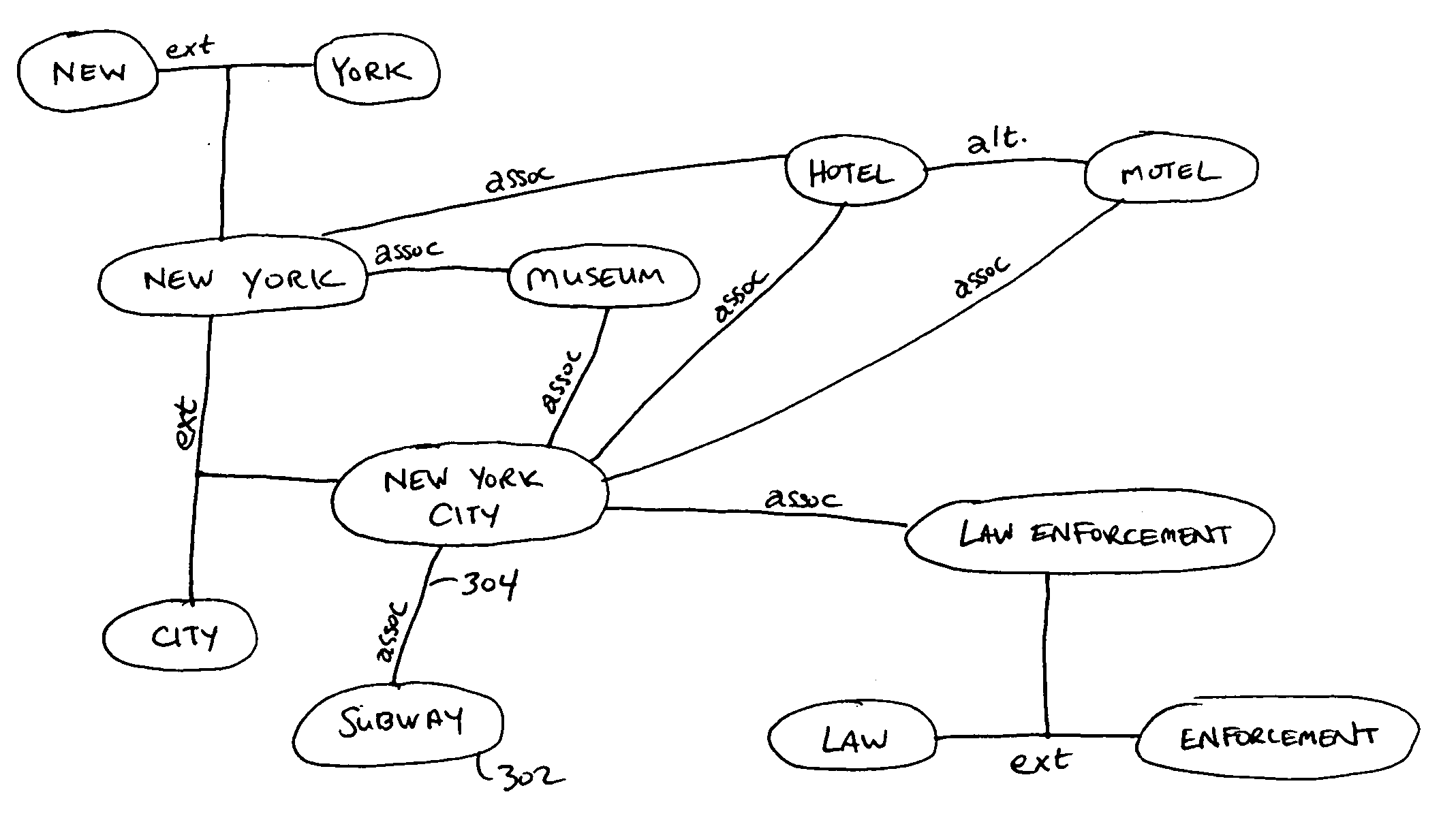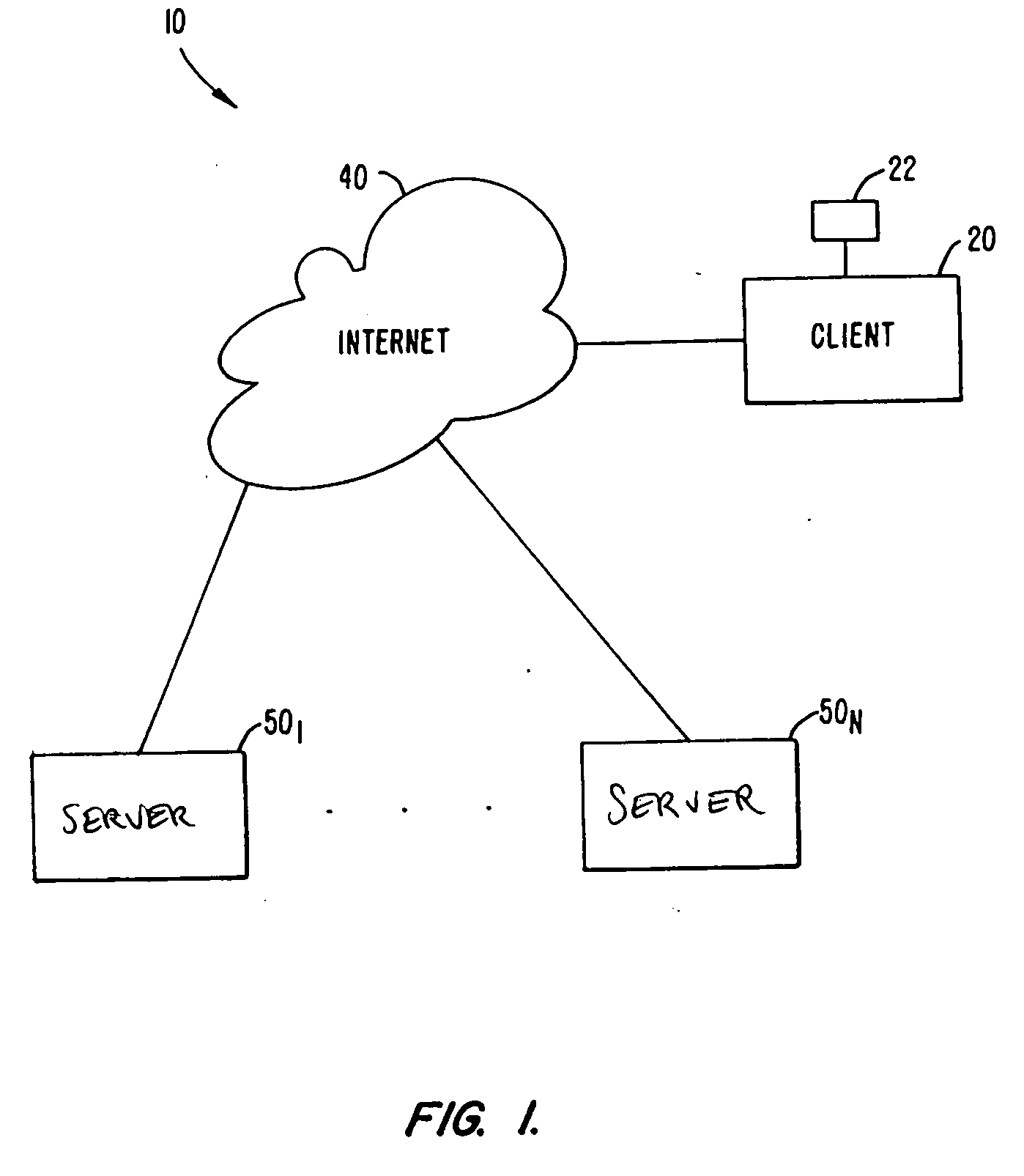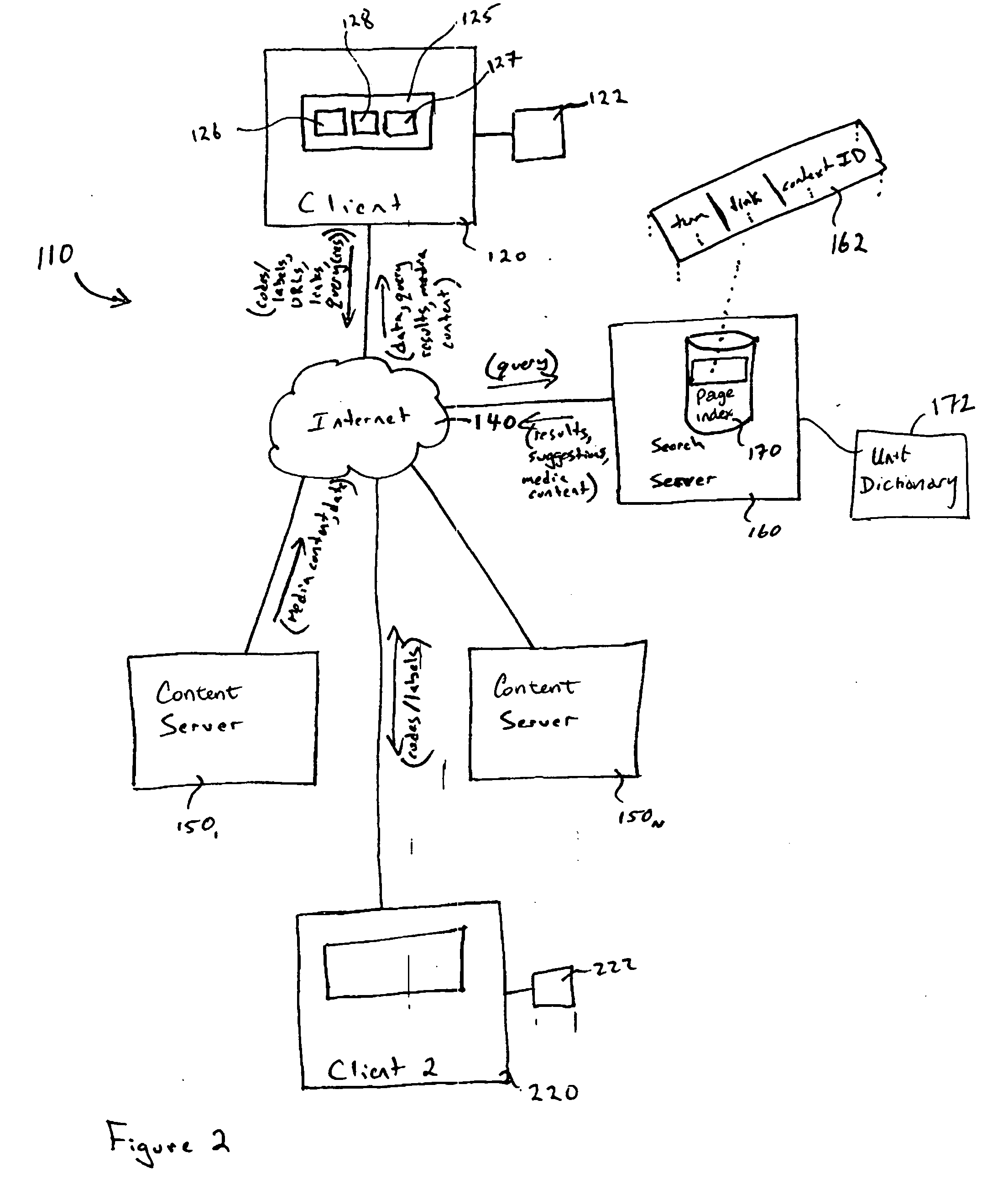Systems and methods for search processing using superunits
- Summary
- Abstract
- Description
- Claims
- Application Information
AI Technical Summary
Benefits of technology
Problems solved by technology
Method used
Image
Examples
example 1
One algorithm takes into consideration the number of matched units as a measure of similarity. The clustering weight for units u1 and u2 is defined as:
W(u1,i2)=NC / NT, (1)
where NC is the number of matched units and NT is the larger of the total number of neighbor units for unit u1 and the total number of neighbor units for unit u2.
Variations are possible. For example, NT might be defined as the smaller of the two totals (instead of the larger), or as the average of the two totals.
example 2
A second algorithm takes into account the frequencies (and thus how important a neighbor unit is for a unit) for every matched unit. The clustering weight for units u1 and u2 is defined as:
W(u1,i2)=FM / FT, (2)
where FM is the sum, over all matched units si, of the frequency with which unit si occurs with unit u1 and the frequency with which unit si occurs with unit u2; and FT is the sum of the same frequencies over all neighbor units, matched or not.
example 3
Relative frequency is an alternative measure of importance in which a penalty (decrease in weight) is attached in cases where the relative frequencies of occurrence of the matched unit with units u1 and u2 are different. In this example, R1i and R2i are defined as the relative frequencies of neighbor unit si with units u1 and u2 respectively. The clustering weight is given by: W(u1,u2)=∑si11-R1i*(1-P*R1i-R2i),(3)
where the sum is taken over matched units si, and P is a penalty factor that weights the difference in relative frequencies. The value of P may be varied; in one embodiment, P=2.
PUM
 Login to View More
Login to View More Abstract
Description
Claims
Application Information
 Login to View More
Login to View More - R&D
- Intellectual Property
- Life Sciences
- Materials
- Tech Scout
- Unparalleled Data Quality
- Higher Quality Content
- 60% Fewer Hallucinations
Browse by: Latest US Patents, China's latest patents, Technical Efficacy Thesaurus, Application Domain, Technology Topic, Popular Technical Reports.
© 2025 PatSnap. All rights reserved.Legal|Privacy policy|Modern Slavery Act Transparency Statement|Sitemap|About US| Contact US: help@patsnap.com



